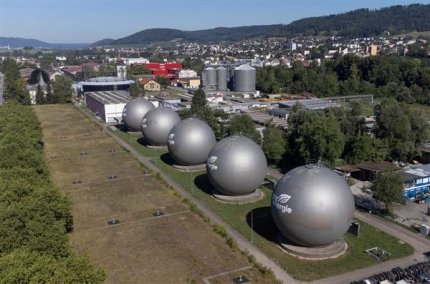The EU is rapidly consuming gas from its own storage facilities amid a cold snap in Europe and the likely cessation of the transit of Russian natural gas through Ukraine.
Points of attention
- The EU is rapidly depleting its gas reserves from storage facilities due to a cold snap in Europe and the likely termination of Russian natural gas transit through Ukraine.
- Gas reserves in EU storage facilities are depleting at a record pace, with volumes decreasing by 19% since the end of September, compared to the usual 10% decrease in previous years.
- European countries are facing challenges in filling their storage facilities by 90% by early November, as demanded by the European Commission, amidst increased competition for LNG supplies from Asia.
- Europe is highly dependent on underground storage this winter to offset falling LNG imports and meet rising gas demand, leading to concerns about the complications in filling storage facilities next year.
- US and Qatar are exerting pressure on the EU regarding gas supplies, with Donald Trump urging the Union to purchase American oil and gas, while Qatar threatens to halt LNG supplies if strict regulations on carbon emissions, human rights, and labor rights are enforced.
What is known about the rapid depletion of European gas reserves?
It is noted that gas volumes in EU countries have decreased by 19% since the end of September.
In previous years, the decrease in gas volumes in EU storage did not exceed 10% over the same period, as high air temperatures ensured relative fullness of storage facilities during the winter heating season, and industry restrained demand due to higher prices.
This winter, Europe has had to rely much more on its underground storage than in the past two years to offset falling LNG imports and meet rising demand, says Natasha Fielding, head of gas pricing in Europe at Argus Media.

Europe has also faced increased competition for LNG supplies, as Asian countries, attracted by lower prices, are also showing high demand.
Meanwhile, LNG supplies to EU countries have slowed, forcing the use of storage reserves.
The last time gas reserves from storage on the continent were depleted so quickly was in mid-December 2021, when Russia began reducing pipeline supplies ahead of a full-scale invasion of Ukraine.
What gas reserves does the EU currently have?
Currently, gas reserves in the EU are at 75%, which is slightly higher than the average for the last 10 years.
As of mid-December last year, the inventory level was close to 90%.
European gas prices are around 90% lower than the €300 per MWh seen during the energy crisis in the summer of 2022.
However, the reduction in gas reserves in storage facilities during the winter period may significantly complicate their filling next year.
EU countries must fill their storage facilities by 90% by early November, in accordance with the mandatory target set by the European Commission.
Currently, most of the gas purchased by EU countries is in the form of LNG.
US President-elect Donald Trump has warned the EU that the Union must commit to buying "large" volumes of American oil and gas or face tariffs.
At the same time, Qatar is threatening to stop LNG supplies to the EU if European countries strictly enforce new legislation to punish companies that do not meet established criteria for carbon emissions, human rights, and labor rights.
Demand for industrial gas in nine northwestern European countries has “recovered from 2023 lows” this year, increasing by 6% year-on-year in the January-November period.
Some countries have depleted their reserves faster than others.
In the Netherlands, gas storage volumes have decreased by 33% since the beginning of winter, and in France by 28%.




